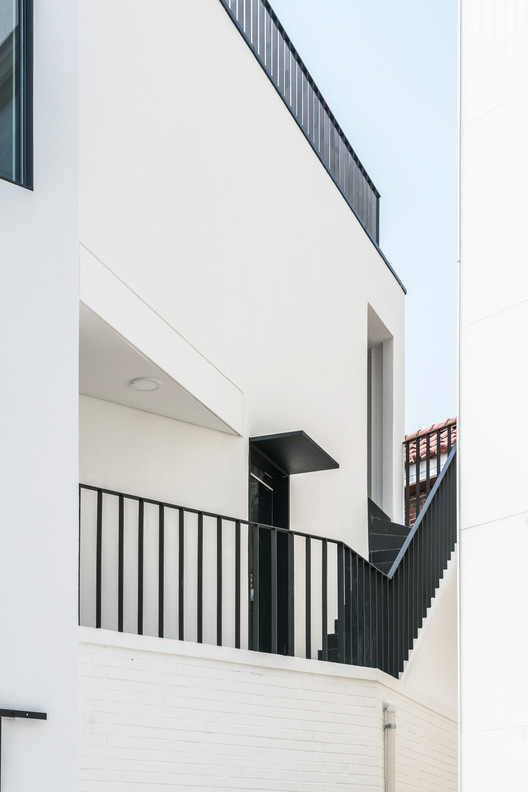
-
Architects: Simplex Architecture
- Year: 2017
-
Photographs:SongYuSub

Text description provided by the architects. Mapo-gu, Hapjeong-dong is undergoing many changes. Dangin-ri Power Plant, the first thermal power plant in Korea, has been responsible for supplying power to the city for more than 80 years. In the 2000s, due to the aging of the generator and to enhance the cityscape of Seoul, the city decided to underground the power plant and create a park above. Due to these changes, the area near the Dangin-ri power plant gradually underwent the process of gentrification, and many of the residential buildings in this area, which had low land prices, have been transformed into commercial spaces.


Hapjeong 359-18 was remodeled in this background. The existing building, which was composed of three floors, was a residential building. The first floor was rented and the second and third floors were used by the owner. The client bought the building and changed it to a commercial building in accordance with the changing trend of Hapjongdong, so as to rent it to restaurants, cafes and offices. In addition, the building was built of brick and had to undergo a lot of structural reinforcement for remodeling.

The existing building had a door on the right side of the entrance to be used by the tenant on the first floor, and a doorway used by the owner and an indoor staircase to the second and third floors were located on the front. Especially, the stairs going up from the 2nd floor to the 3rd floor were too steep and had to be changed with proper stairs. This building was expanded to four story building and the stairway position was changed outwards, allowing independent entry from outside stairs to each floor, thereby maximizing the visual exposure of each floor. In addition, the fourth floor which is connected with the interior stairs from the third floor has a separate roof terrace that provides a view towards the newly constructed Dangin-ri Park.

The existing building was originally cladded with red brick. While the south, north, and west elevations that have little visual exposure from the main access road were painted white to minimize the construction cost, the east elevation which is the main façade was cladded with white stucco, contrasting with the black steel frame of the window.

























